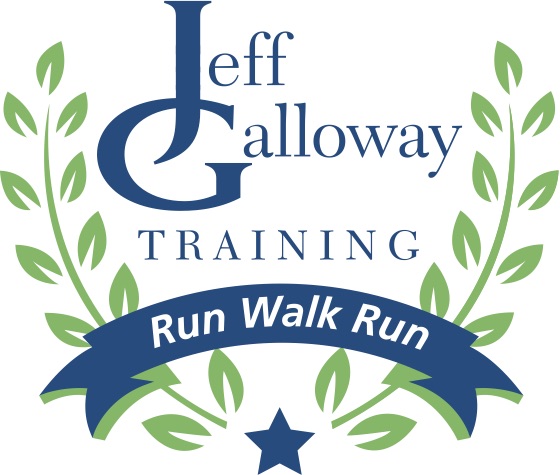After having heard from hundreds of those using my run-walk-run method in triathlons, here is what I've found.
In transition, it's better to walk more. The first quarter to half mile on the run is usually slow and is a struggle.
By using a liberal insertion of walking at first, the legs and feet "warm up" quicker – and can run at the potential pace for that day, sooner and longer.
Trying to run without sufficient walk breaks increases fatigue rapidly and often results in a slowdown during the last half of the race.
Most of those who reported back to me were surprised that their times improved when they started taking walk breaks. This is due to not slowing down at the end of the race.
If the running portion is a 5K, it is usually fine to use the following strategy for the first mile or two (in GALLOWAY TRAINING PROGRAMS, 5K/10K, HALF MARATHON & YEAR ROUND PLAN). During the last mile, one can eliminate or reduce the walk break amount.
7 min/mi: run 6 min/walk 30 sec
7:30/mi: run 5 min/walk 30 sec
8 min/mi: run 4 min/walk 30 seconds
9 min/mi: run 4 min/walk 1 min
10 min/mi: run 3 min/walk 1 min
11 min/mi: run 2:30/walk 1 min
12 min/mi: run 2 min/walk 1 min
13 min/mi: run 1 min/walk 1 min
In the half marathon I recommend using a 1-1 (run one minute, walk one minute) for the first half mile, then either 1-1 or 2-1 for the second half mile. At that point, the runner can transition into the run-walk-run strategy listed above.
In the marathon, I recommend using a 1-1 for the first 1-3 miles, then gradually transition to the strategy that works best for the goal pace, on that day.
There is a trend among half and full ironman athletes to run faster at the end with more liberal walk break portions than the pace would indicate above. For example, many 9 minute Ironmen use a 3-1 and some have used 2-1 for the half and then shifted to 3-1 or 4-1.
Best of running!

Jeff, I recently began running again after taking 4 years off.
I began by just running a good 3 miles and then remembered . . . Galloway! I ordered the timer, set it to a 4:1 and wouldn’t you know, I went from a 10.5 mile to a 9.5 mile . . . in a day. No joke.
I’m currently training for a 10K and then a half-marathon (the last one I ran was in 2005).
Thanks for the encouragement! And for saving my knees, my hips and my ankles, etc.